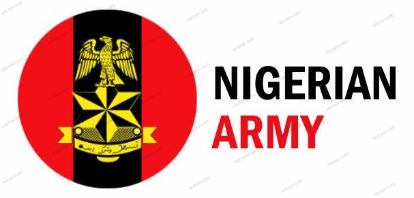In the excerpts of his 1989 autobiography titled Reminiscences, General David Ejoor stated that,
In the colonial days, the cap badge of the army was a palm tree. This could be interpreted to represent the wealth of the country which the British were to exploit. For that reason, the palm tree had to go. Besides, the Action Group party had a palm tree as its symbol, and it was important that the army and a political party should not have the same symbol. My job was to seek a new meaningful design for the cap badge of the Nigerian Army. I set to work”.
“In seeking a new design, I was anxious that the symbol should reflect the duty of the army and should be capable of inspiring officers and men. As I searched, I remembered the battle between the British and the Sokoto forces in 1903. At that battle, the Sokoto forces had carried the Sultan’s flag with an Arabic inscription on it. That Arabic inscription I learnt meant, “Victory Is From God Alone”. This, I thought was an excellent symbol that had meaning and could inspire. What is more, the British had themselves incorporated the symbol into the regimental colour which the Nigerian Regiment carried on parade. I decided to incorporate the Arabic inscription into the cap badge to represent defence.”
FEATURES OF THE NIGERIAN ARMY LOGO AND THEIR FULL MEANINGS
The Logo, emblem or insignia of the Nigerian Army is characterized by the following:
THE EAGLE
The Eagle represents the Nigerian Army’s majestic power. The eagle is revered as a towering emblem of grace, power, and elegance in many regions of the world. The bird is also recognized for its excellent sense of observation, and this can be likened to the Nigerian Army as it is known for keeping a close eye on the situation of things in the country during times of peace and striking with precision and decisiveness when provoked beyond tolerance during the times of war, insurgency and terrorism that threatens the territorial integrity of Nigeria.
TWO INTERLACED TRIANGLE-LIKE SIX POINTED STARS
The Nigerian Unity is symbolized by the two interwoven triangle-like six-pointed stars. The event of 1914, when Lord Lugard, the country’s first Governor General, merged the Northern and Southern Protectorate, exemplified this togetherness. Despite all challenges, the country has retained its cohesiveness over the years. The 20-month Nigerian civil war between 1967 – 1970 threatened to shatter this tie, yet the country is still standing today.
THE ARABIC SCRIPT/MOTTO OF THE NIGERIAN ARMY
The Arabic calligraphy on the logo of the Nigerian Army translates to “Nasrunminallah”, which means “Victory is From God Alone”. This slogan was first engraved on the Nigerian Indigenous Forces’ banner, which they used to fight invading colonial forces. Shehu Usman Dan Fodio, the leader of the Sokoto Caliphate, is credited with coining this phrase. Pre-Independence, it was adopted by the British. The British, however, gave it over to the country in a solemn ceremony just before the country’s independence.
Many people are perplexed as to why the flag’s motto is written in Arabic. The answer can be found in a chapter of the country’s history. Frederick Lugard, the first Commander of the West African Frontier Force from 1897 to 1899, used this phrase. Between 1899 to 1906, he served as the first High Commissioner of Northern Nigeria, and between 1912 and 1914, he served as the Governor of the protectorates of Northern and Southern Nigeria. Between 1914 and 1919, Lugard served as the first Governor General of post-amalgamation Nigeria.
During his tenure in Nigeria/West Africa, he identified Arabic as the only written indigenous language, notably among the widely dispersed Hausa trading class. As a result, Arabic inscriptions were utilized as insignia on official West African Frontier Force badges as well as coinage. This is still visible today, especially on the Nigerian Army’s emblems and flag.
THE RED AND BLACK COLOURS
The Nigerian Army flag features three vertical stripes of equal width namely red, black, and red. These colours are based on NATO’s military colour scheme. The colour red represents enemy forces, installations, and activities, whereas black is the traditional colour of cavalry, armoured, and mechanized troops in military circles. You can look up our articles on Nigerian Army Salary Structureand recruitment once you are done with this.
